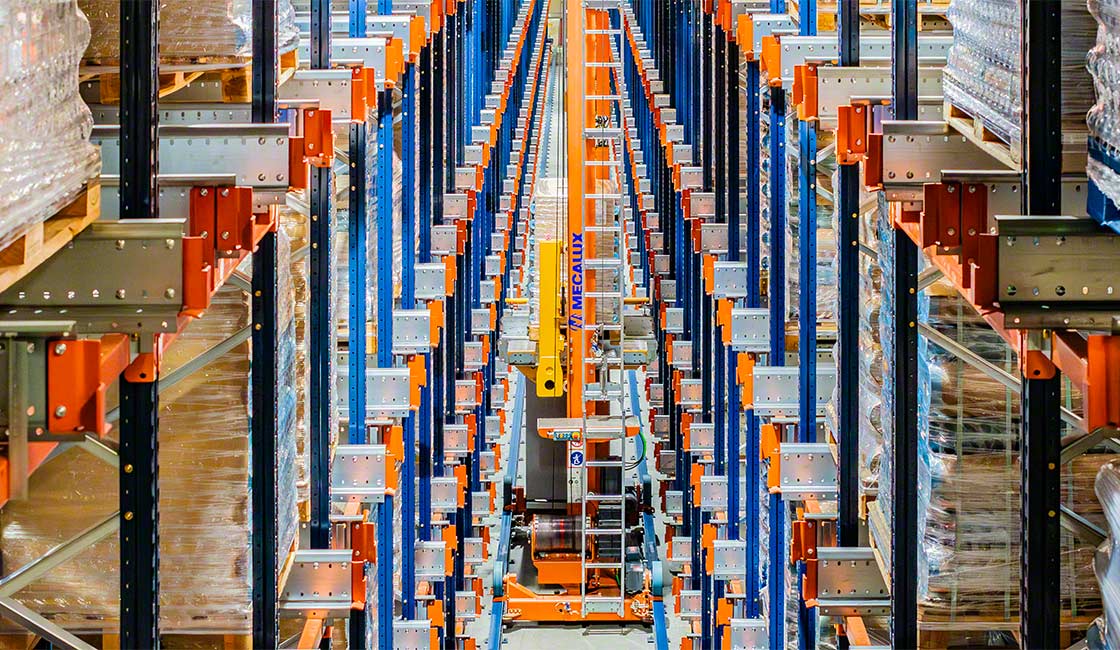
Drones: Now ready for take-off?
Opinions expressed whether in general or in both on the performance of individual investments and in a wider economic context represent the views of the contributor at the time of preparation.
Executive summary: We may be on the cusp of a transformation in how people and goods are transported. If the full potential of drones is realised, then how we shop, travel and do almost anything else may be revolutionised. The number of possible drone use cases is almost limitless. The industry has evolved from a conceptual or hype-based phase to practical trials and real-world deployments, accelerated by falling costs and improving technology. Regulators are getting on board. Over $5bn has been committed to funding 130 different start-ups in the last two years. By 2030, the (non-military) drone opportunity could be as large as $100bn. Although there are few listed pure-play drone businesses today, watch this space. If you think of drones as being self-flying computers that can transmit data directly into the cloud, then the whole digital ecosystem should benefit from the industry’s growth.
Say drone to most people and the image they might form is of a stealth military device capable of flying undetected into a warzone to wreak havoc. Alternatively, it could be of a keen hobbyist using one to film some novel views from their holiday. Think again. While both these visions are relevant, weare in the early stages of a historic shift in the transportation of goods and people.
Although we have followed the topic of drones for much of the last decade, it is only now becoming more interesting from an investment perspective. As with almost every other future trend we consider, a combination of falling costs and improving technology has made the business case for drones more attractive. The evolution of the Internet or GPS (global positioning systems) serve as good templates. They have developed from their original military roots to now encompass a broad array of business applications. The COVID-19 pandemic has also helped heighten the logic for remote and convenient deliveries – something which can easily be achieved by drones.
The terms drone, UAV (unmanned aerial vehicle), RPAS (remotely piloted aircraft systems), AAM (advanced aerial machine) and VTOL (vertical takeoff and landing devices) are used increasingly interchangeably. Where there is commonality is that all the aboveconstitute powered, aerial vehicles that do not carry a human operator, use aerodynamic forces to provide vehicle lift, and can fly autonomously, typically by being piloted remotely. Drones were originally developed through the 20th century for military missions that were typically viewed as too dull, dirty or dangerous for humans. In this century, they have become essential assets to most militaries, as the Russia-Ukraine conflict has recently demonstrated.
The potential broader opportunities for drone deployment have, however, grown substantially owing to two factors, hardware, and software. Take the former, and similar to electric vehicles, the 90% decline in the cost of lithium-ion batteries over the past decade has markedly improved both the economics of drones and also their range and durability. Although drones are often categorised as being either fixed or rotary winged, based on their physical architecture, the bigger recent revolution, however, has been in their underlying software. Think of a drone as a self-flying computer that can transmit data straight into the cloud. The value add that derives from their adoption may lie in the (visual) data that drones can collect, often at a fraction of the cost of acquiring this data via other means. Further, how we use drones may change fundamentally once they start to be networked and can work in teams.
The benefits of using drones relative to other forms of either transportation or data collecting alternatives can be characterised as improved efficiency, lowered costs, and enhanced safety. Additionally, six in ten industry leaders interviewed in a recent study by Deloitte believe that drones also constitute a more sustainable and environmentally friendly solution relative to comparable alternatives. Hard numbers, of course, are more difficult to come by given the general nascence of the market and the diverse scenarios (many of which are still hypothetical) where drones could be deployed.
Nonetheless, it’s still very easy to conceive of howdrones may transform the ways in which people and cargo are moved, potentially revolutionising shopping behaviour, reducing travel times and saving lives. At the least, increased drone deployment should be thought of as a tool by which remote or rural communities could be better connected with the rest of the world. Put another way, drones could transport just about anything or anyone (particularly once the opportunity is expanded to include people-carrying devices).
Against this background, the potential number of use cases for drones is almost indefinite. Based on various consultant reports, the commercial (i.e., non-military) drone market was already worth ~$15bn globally in 2020. Given that consensus assumptions call for a ~20% compound annual growth rate through to the end of the decade, by 2030 the industry could be worth at least $100bn. Importantly, these assumptions typically do not include the advanced air mobility market of transporting humans. One study (by Deloitte) predicts that this market segment alone could be worth $115bn by 2035.
At present, the five largest end-markets in which drones are deployed comprise agriculture, construction and mining, insurance, media and law enforcement. Begin with the former. If you accept the prediction of the United Nations that the world’s population will reach 9.7bn by 2050, then this will cause agricultural consumption to rise 69% between 2010 and 2050. Drones could play a major role in helping to align demand with supply by enabling farmers to enhance their yields through several mechanisms.
The adoption of precision agriculture with more accurate land and crop data could allow for increased efficiency in the planting, measuring, scanning and monitoring development of crops. These developments could also help reduce the costs and hazards related to spraying of fertilisers and pesticides. DroneFly, a private player within the sector, estimates that its drones can spray fertiliser some 40-60 times more efficiently than doing so by hand. Separately, drones could also be used for tracking and herding livestock. Around a third of farmers say that they are either using or considering using drones (per Global Insights). High-profile success stories can be found across the US, Australia, Canada and China.
Within the construction and mining space, it is easy to conceive of how drones could perform construction surveys as well as prospecting opportunities for miners. Remote monitoring (of oil rigs, wind turbines, electricity cables, gas pipes, or other infrastructure) represents another opportunity. Both the UK’s National Grid and Florida Power and Light in the US are currently trialing drones in this respect. Deloitte’s study highlights the potential benefits. Whereas a traditional ground-based inspection team could only cover 2-5 turbines/day, this figure could grow to 10-12 turbines/ day when using drones with manual flight control. Assume advanced software with autonomous flight and the level may rise to as much as 15-20.
When you consider that the average global annual cost of insurance claims from natural disasters has increased approximately eightfold since 1970 (per Allianz), the logic of deploying drones in this area should be clear. Drone technology could provide faster and more accurate property assessments by quickly reaching often remote locations immediately after a disaster hits. From there, they can capture precise images and videos of damage that can be transmitted back to mobile devices for assessment in real time. Ultimately, drones can help claims adjusters process property significantly faster than doing so manually.
Drones have other benefits too when natural disasters hit. They can be used for the delivery of humanitarian aid. Drones have provided post-hurricane relief to communities in Puerto Rico and Haiti and also helped deliver critical pandemic supplies (both personal protective equipment and COVID-19 testing kits) to remote communities in countries as diverse as the US, Israel and Ghana. Zipline, a privately-owned drone business based in California says that it has completed over 150,000 drone missions across the world, supplying hospitals with blood, medicine and vaccines. Britain’s National Health Service announced in July that it would be trialing the use of drones to help critical drugs from one part of the country to another, especially to more remote areas such as the Isles of Man and Wight.
Beyond these areas (as well as the unrelated new media and surveillance opportunities that drones could generate), the largest addressable market for unmanned aerial vehicles could be in e-commerce. At present, an estimated 2,000 drone deliveries of goods are currently occurring daily (per McKinsey). Given the developments within the space, over 1.5m such transports might be made in 2022, up more than threefold from last year’s level. Major players are getting involved in the space. Subsequent to successful trials by Walmart in its home state (Arkansas), America’s largest retailer said in May that it would expand its delivery network to 34 sites in 6 states by the end of this year, with deliveries made to customers within 30 minutes of orders being placed. Amazon announced in June that it would launch a similar ‘Prime Air’ drone delivery service on a trial basis at some very selected locations in California and Texas before year-end.
Customer interest is already there for such services. Nearly 60% of respondents to a six-country survey conducted by McKinsey said they would use a drone-delivery service today if it were available in their area, compared to only 16% who said they would not (the remainder were ambivalent). With such a backdrop, many other companies are also joining the fray. Among the most high profile, Wing (a subsidiary of Alphabet) is launching a “drone delivery where you need it” store-to-door offering with a 15-minute delivery time in certain districts of Helsinki, Canberra and Virginia. Additionally, UPS and DHL are seeking soon to offer postal deliveries by drone and Domino’s is said to be keen to trial aerial pizza deliveries.
Looking even further ahead, the holy grail for the drone industry could lie in the transportation of people. Think of vertical take off and landing devices as drones 2.0, or a novel way to move people with less congestion in a form that is fundamentally different to a helicopter (since no pilot would be involved). The hope is that VTOLs could absorb segments of the transport market that are currently too slow, inefficient, or alternatively too costly. Regional trains and flights might fall into the former category; expensive helicopters or jet charters into the latter.
Anecdotally, over 40 companies are trialling services at present. Joby Aviation says it plans to launch an app-based aerial ridesharing service direct to end users in 2024. It has already conducted over 1000 test flights (some in conjunction with the US Air Force) and has partnered with players including Uber and Delta. Another business, Lilium, has said it is planning to build a vertiport in Florida with a view to offering services from 2025. It has already signed a memorandum of understanding with NetJets by way of building out its franchise. Similar initiatives are underway in cities as diverse as Paris, Singapore and Dubai. Private company Faradair has plans services in the UK, linking both cities and more remote locations, by around the middle of the decade.
As exciting as all these initiatives seem, with people especially (but also cargo), the technology needs to be not only readily available and cost-effective but also secure. Regulation is therefore key. At the least, it will be critical to develop clear policy relating to altitude and range restrictions in order to manage the effective development of the industry as well congestion in the skies. Other important considerations relate to contingency planning in the event of severely adverse weather, potential communications failure, signal jamming or cyber breaches.
While many trials have been successful (and the underlying technologies are improving constantly), regulators may still need further convincing. Some form of regulation is already in place in countries including Australia, France, Japan, South Africa, the UK and the US. The landscape is continuing to evolve. As recently as June, America’s Federal Aviation Administration said that it was in the process of finalising rules that would allow companies to fly drones “beyond the visual line of sight.” Three similar trials are also underway in the UK as is a government plan to potentially create a ‘drone superhighway’ linking aerospace across 165 miles of the country. Successful implementation would enable more widespread drone deployment. Watch this space.
Another concern relates to the noise generated by drones (the clue is in the name!). Devices that weigh up 5kg typically produce noise levels between 70dB and 85dB when flying 1m above the ground, similar to a car passing at 30 miles an hour. Meanwhile, a drone with a heavier 20kg payload would produce a noise level comparable to a helicopter hovering at 500m (per the Swiss Federal Laboratories for Materials Science and Technology). A separate survey by NASA also found that people were more annoyed by drone-related disturbances than by the loud noises made by cars and vans. These concerns may take time to assuage as might other charges levelled by sceptics such as where drones might be able to land safely in dense urban environments without causing excess disruption or whether drones could be deployed for more nefarious purposes such as the delivery of illegal drugs.
None of this has stopped more than $5bn of investment in the drone sector during the two years to the end of 2021, resulting in the formation of around 130 different businesses. Such activity might suggest relatively low entry barriers, but it is worth noting that the majority of new money raised has gone just six players located in the US and Europe: Joby Aviation, Lilium, Paragon, Archer Aviation, Beta Technologies and Volocopter (all information per Phystech Ventures). Even with some scale and first mover advantage benefits, the time from certification, testing and evaluation through to full launch and commercial deployment could be up to a decade, implying that while some businesses may succeed, consolidation and failure will also characterise the industry’s evolution.
From an investment perspective, there are few listed pure plays today. Many of the businesses active in the space are parts of larger conglomerates or private enterprises. If other industries provide a template, it is also worth considering whether most value will accrue to hardware of software players (our best guess would be the latter) and also what sort of model for drone ownership and operation might emerge (drones as a service, potentially managed by platform businesses seems plausible).
The businesses that have developed – for now – the strongest franchises within the drone space can all be found in the aerospace and defence sector (think of Lockheed Martin, Northrop Grumman and Raytheon in particular) although some investors may be deterred owing to sustainability concerns. Adjacencies within the value chain would include TransDigm and Ambarella which design, respectively, gyroscopes and chip systems for drones among other things. Pure plays include Joby Aviation and Lilium. Although the former is capitalised at over $2bn (the latter is much smaller), it is worth bearing in mind that neither business has reported any revenues to-date. Other small cap plays would include Parrot (which provides consumer drones), Drone Delivery Canada (its activities are self-explanatory) and Drone Shield (a defence business). More drones are also good for the broader digital ecosystem: they need not only semis, but also cloud storage. Data production and consumption is only heading one way.
Alex Gunz, Fund Manager, Heptagon Capital
Disclaimers
The document is provided for information purposes only and does not constitute investment advice or any recommendation to buy, or sell or otherwise transact in any investments. The document is not intended to be construed as investment research. The contents of this document are based upon sources of information which Heptagon Capital LLP believes to be reliable. However, except to the extent required by applicable law or regulations, no guarantee, warranty or representation (express or implied) is given as to the accuracy or completeness of this document or its contents and, Heptagon Capital LLP, its affiliate companies and its members, officers, employees, agents and advisors do not accept any liability or responsibility in respect of the information or any views expressed herein. Opinions expressed whether in general or in both on the performance of individual investments and in a wider economic context represent the views of the contributor at the time of preparation. Where this document provides forward-looking statements which are based on relevant reports, current opinions, expectations and projections, actual results could differ materially from those anticipated in such statements. All opinions and estimates included in the document are subject to change without notice and Heptagon Capital LLP is under no obligation to update or revise information contained in the document. Furthermore, Heptagon Capital LLP disclaims any liability for any loss, damage, costs or expenses (including direct, indirect, special and consequential) howsoever arising which any person may suffer or incur as a result of viewing or utilising any information included in this document.
The document is protected by copyright. The use of any trademarks and logos displayed in the document without Heptagon Capital LLP’s prior written consent is strictly prohibited. Information in the document must not be published or redistributed without Heptagon Capital LLP’s prior written consent.
Heptagon Capital LLP, 63 Brook Street, Mayfair, London W1K 4HS
tel +44 20 7070 1800
email [email protected]
Partnership No: OC307355 Registered in England and Wales Authorised & Regulated by the Financial Conduct Authority
Heptagon Capital Limited is licenced to conduct investment services by the Malta Financial Services Authority.



